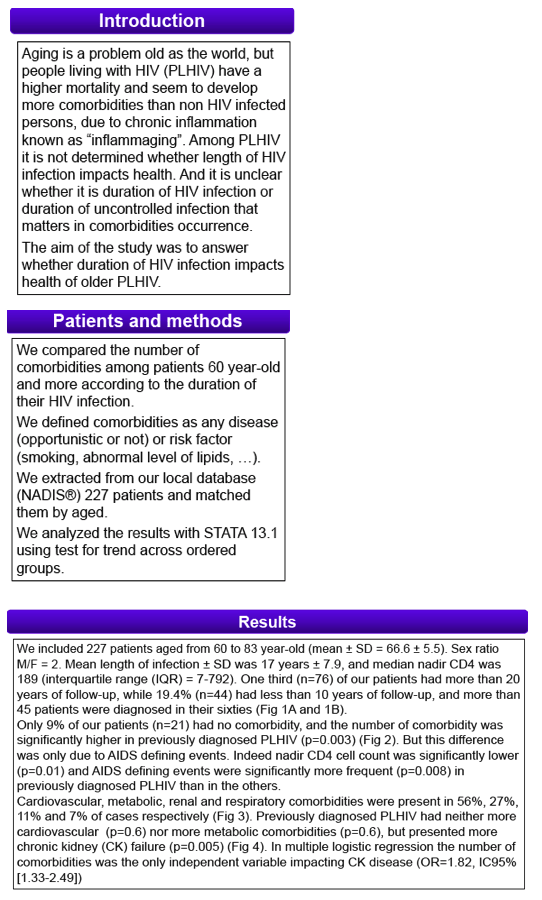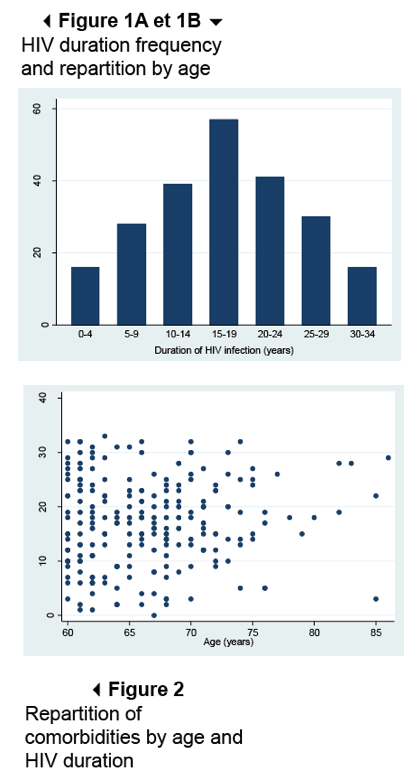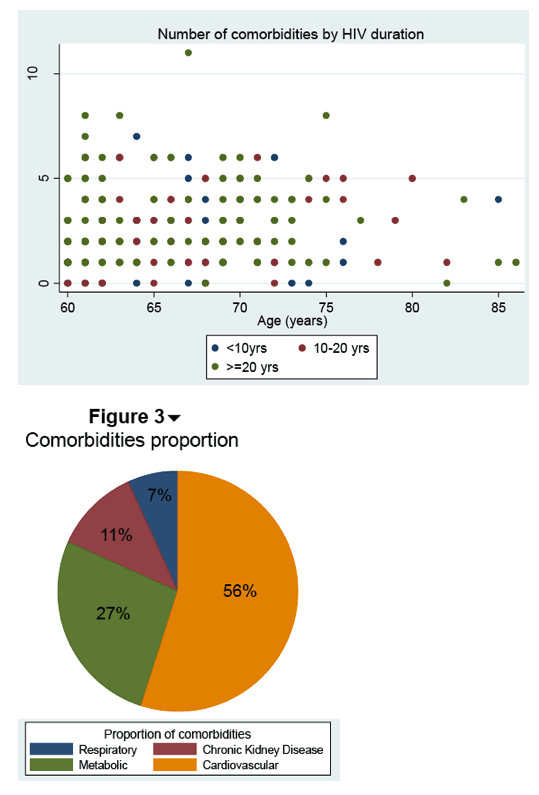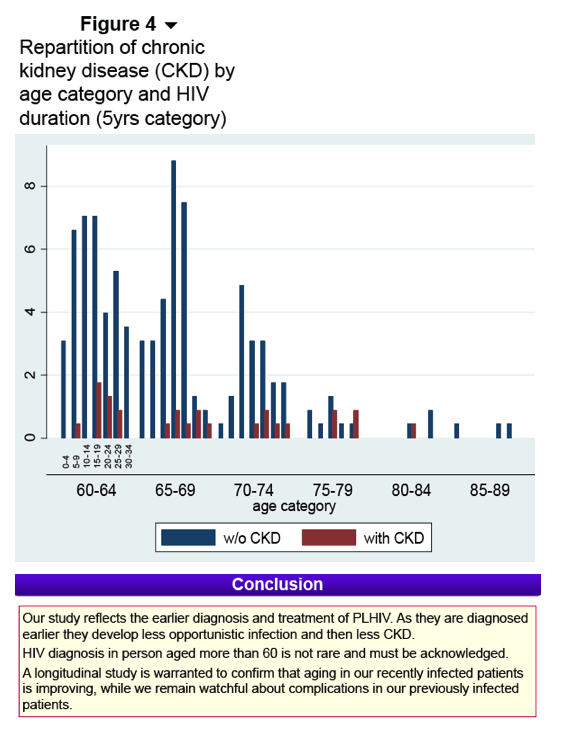 |
 |
 |
| |
In Over-60 Group, Longer Known HIV Duration Tied to Kidney Disease
|
| |
| |
16th European AIDS Conference, October 25-27, 2017. Milan
Mark Mascolini
Among HIV-positive people 60 to 83 years old, those with more than 20 years of follow-up had a higher rate of chronic kidney disease (CKD) than those in care for fewer than 10 years [1]. But this 227-person single-center analysis found no difference between the groups in rates of cardiovascular disease or metabolic comorbidities.
Some non-HIV diseases develop in people with HIV at an earlier age than in the general population. Whether this heightened risk reflects longer time with uncontrolled HIV or longer total time with HIV remains poorly understood. A study at a Montreal clinic also presented at this meeting found similar current CD4 counts and viral loads in an over-50 group diagnosed with HIV for 20 or more years or 10 or fewer years [2]. A study at the University Hospital in Amiens, France used the same over-20 versus under-10 distinction but limited the analysis to people 60 or older.
Whereas the Montreal study focused on lab values, the Amiens analysis compared comorbidities in the group with more than 20 years in care and the group with fewer than 10 years. They defined comorbidity broadly as any HIV-related or unrelated disease or any risk factor (like smoking or abnormal lipids).
The study included 227 people with ages ranging from 60 to 83 (average 66.6). Two thirds were men. Seventy-six people (33%) had more than 20 years of follow-up, while 44 (19%) had 10 or fewer years of follow-up. In the whole group HIV duration averaged 17 years. About 1 in 5 people did not get diagnosed with HIV until age 60 or older.
A robust 21 people (9%) had no comorbidities. The number of comorbidities was significantly higher in people in care more than 20 years than in those with under 10 years of follow-up (P = 0.003), but this difference mainly reflected a higher number of AIDS-defining diseases in the longer-term group.
Substantial proportions of the entire cohort had cardiovascular disease (56%), metabolic disease (27%), CKD (11%), and respiratory disease (7%). People with more than 20 years of follow-up did not have higher rates of cardiovascular or metabolic disease than people with 10 or fewer years (P = 0.6), but they did have a higher CKD rate (P = 0005). Almost all CKD cases involved people with 15 or more years of follow-up. Multivariable logistic regression identified only one independent predictor of CKD: more other comorbidities (odds ratio 1.82, 95% confidence interval 1.33 to 2.49).
The researchers stressed that diagnosing HIV in people older than 60 is not rare, and the possibility should not be overlooked. They see a need for longitudinal studies to explore the question of HIV duration in older people.
References
1. Lanoix JP, Schmit JL. Does duration of HIV infection make our patients older? A cross-sectional study comparing comorbidities in recently and previously infected patients. 16th European AIDS Conference. October 25-27, 2017. Milan. Abstract PE11/14.
2. Beauchemin M, Greenwald Z, Longpre D, Lavoie S, Charest L, Thomas R. HIV over 50: comparison between newly and long-infected individuals. 16th European AIDS Conference. October 25-27, 2017. Milan. Abstract PE23/21.




|
| |
|
 |
 |
|
|